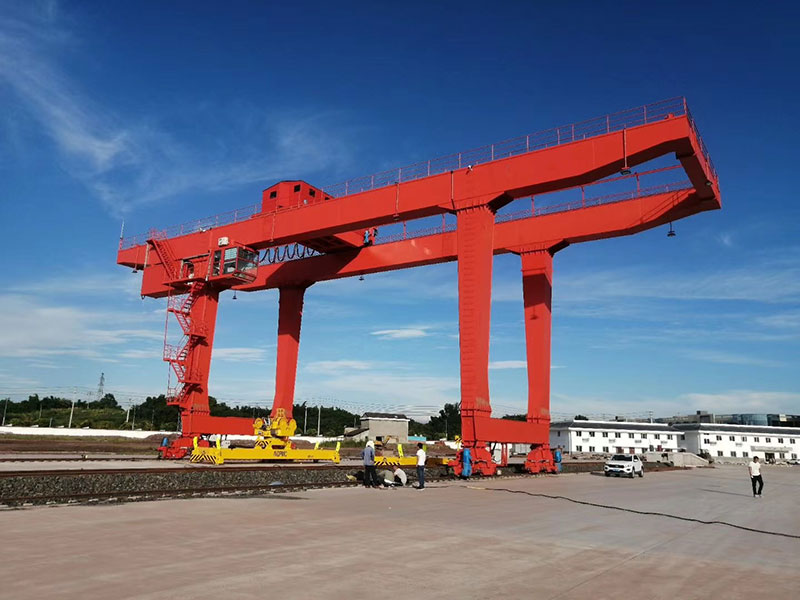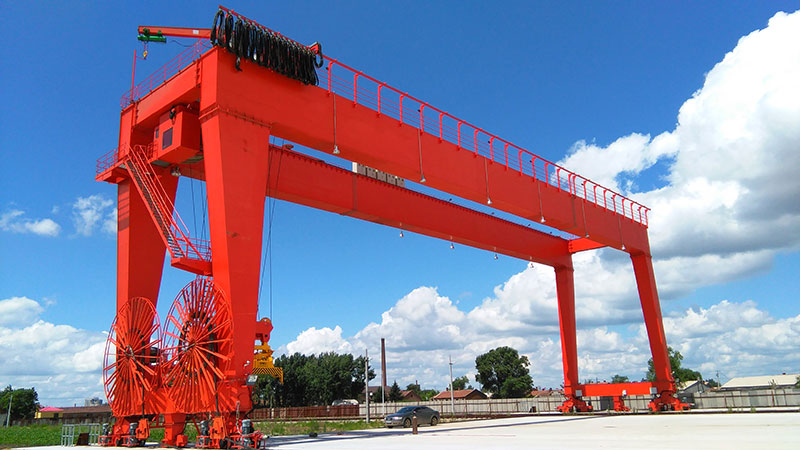Rail-mounted container gantry cranes (RMG) play a vital role in the efficient handling of containers in port terminals and intermodal yards. These powerful machines are designed to lift, move, and stack containers with precision and speed. However, the safe operation of RMG cranes requires adherence to strict procedures and safety measures. In this article, we will explore the operation procedures and safety considerations associated with rail-mounted container gantry cranes.

Pre-Operational Checks
Before commencing operations, it is essential to conduct thorough pre-operational checks to ensure the crane’s proper functioning. These checks typically include inspecting the crane’s structural components, electrical systems, control mechanisms, and safety devices. Any signs of wear, damage, or malfunction should be promptly reported and addressed.
Furthermore, the operator should verify that the emergency stop buttons, limit switches, load indicators, and other safety features are in working order. Regular maintenance and periodic inspections by qualified technicians are crucial to ensure the crane’s reliability and adherence to safety standards.
Operational Procedures
Safe operation of an RMG shipping container gantry crane requires adherence to specific operational procedures. These procedures include the following:
a. Proper Communication: Clear and concise communication between the crane operator and ground personnel is essential. Hand signals, two-way radios, or other designated communication methods should be used to relay instructions and ensure a coordinated workflow.
b. Load Assessment: Before lifting a container, the operator must assess the weight, dimensions, and stability of the load. It is crucial to ensure that the crane’s lifting capacity is not exceeded, and the load is properly balanced and secured.
c. Maneuvering and Positioning: The operator should be familiar with the crane’s control system and carefully maneuver the crane along the rail tracks to position it accurately. Attention should be paid to any potential obstacles or clearance issues during movement.
d. Lifting and Lowering: The lifting and lowering of containers should be carried out smoothly and at a controlled pace. Sudden or jerky movements can lead to instability or damage to the load. The operator should maintain visual contact with the load at all times and ensure that it is properly guided during lifting or lowering operations.
e. Stacking and Unstacking: When stacking containers, the operator should follow the specified stacking pattern, ensuring that containers are aligned and secured to prevent shifting or toppling. Similarly, during the unstacking process, caution should be exercised to avoid potential hazards.

Safety Measures
Safety is paramount in the operation of RMG cranes, and several measures must be taken to mitigate risks. Here are some essential safety considerations:
a. Operator Training: Operators should receive comprehensive training on the safe operation of RMG cranes. They must understand the crane’s capabilities, limitations, emergency procedures, and safety protocols. Ongoing training and refresher courses are vital to keep operators updated on the latest industry practices.
b. Personal Protective Equipment (PPE): All personnel working in the vicinity of the gantry crane system must wear appropriate PPE, including high-visibility clothing, safety helmets, and safety shoes. Additionally, the operator’s cabin should be equipped with suitable ergonomic seating and climate control to ensure operator comfort and alertness.
c. Traffic Management: Proper traffic management protocols should be in place to prevent collisions or accidents involving other equipment, vehicles, or pedestrians. Clear signage, designated traffic lanes, and restricted access zones contribute to a safe working environment.
d. Emergency Preparedness: Emergency response plans should be established, including procedures for handling equipment malfunctions, power failures, or accidents. Operators must be trained in emergency shutdown procedures and know how to respond to potential hazards or incidents.
Conclusion
The safe operation of rail-mounted container gantry cranes requires adherence to strict operational procedures and safety measures. Conducting pre-operational checks, following proper communication protocols, and ensuring the crane’s stability during lifting and lowering operations are crucial aspects of safe operation. Additionally, comprehensive operator training, the use of personal protective equipment, efficient traffic management, and emergency preparedness contribute to a safe working environment.
By prioritizing safety and adhering to established procedures, port terminals and intermodal yards can maximize the efficiency of rail-mounted container gantry crane operations while minimizing the risks associated with their use.
